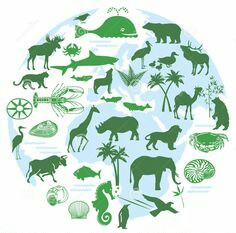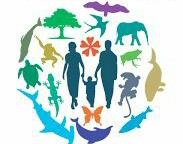Research has made it clear that over 50 million species of plants, animals, and micro-organisms are existing around the universe. From this over 50 million species. It only 1.4 million species have been discovered so far. Every one of these species has a specific environment in which they adapted to, from the depth of seas to the mountain’s peak, and from polar ice caps to tropical rain forests and deserts. All these differences of life are confined to only about the one-kilometer thick layer of lithosphere, hydrosphere, and atmosphere which form biosphere.
The study of environment and ecology is of old, but the term biodiversity was introduced by Walter Rosen in 1986. Therefore, biological diversity or Biodiversity is defined as the difference and variability among the living organisms and the ecological complexes in which they live.

So from the definition, biodiversity is the variability’s within species of animals, plants, and microorganisms; ecosystems; including terrestrial, marine, aerial and all other aquatic system and environmental complexes of which they are part. In a simple note, biodiversity is the assemblage of different life forms. With all efforts of many tools and data sources, biodiversity still difficult to quantify precisely. But straight answers are occasionally needed to devise required knowledge of where biodiversity is located, how it is changing over time and space, those drivers responsible for such change, the effects of such change for ecosystem services and human well-being, and the response options available.

In order to assess the trends and conditions of biodiversity either in the region or subregion, it is necessary to measure the quantity of all organisms over space and time, using taxonomy like the number of species, functional traits for example, the ecological type like nitrogen-fixing plants like legumes versus non-nitrogen-fixing plants, and the interactions among species that affect their dynamics and function predation, parasitism, competition, and facilitation like pollination, for example, how strongly the interactions affect ecosystems. It would be more essential to estimate the turnover of biodiversity, not just point estimates in space or time. Presently, it is not possible to do this with much accuracy because the information is lacking. Even for the taxonomic component of biodiversity, where data is the best, considerable uncertainty remains about the true extent and changes in taxonomic diversity.
This Concept has been given many researchers or scholars tough time in the scientific world as new species of microorganisms are been discovered every day.